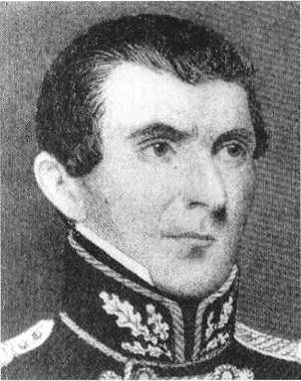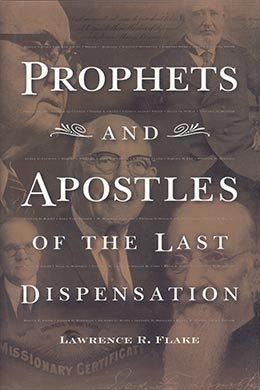John Cook Bennett
Lawrence R. Flake, Prophets and Apostles of the Last Dispensation (Provo, UT: Religious Studies Center, Brigham Young University, 2001), 281–83.

Born: 3 August 1804, Fair Haven, Massachusetts
Additional counselor to President Joseph Smith: 8 April 1841 (age 36)
Disfellowshiped: 25 May 1842
Excommunicated: Later in 1842
Died: 5 August 1867 (age 63), Polk City, Iowa
Shortly after the Saints commenced the establishment of Nauvoo, Joseph Smith received several letters from Dr. John C. Bennett, who offered his services to the Church. Mr. Bennett, a practicing physician, a professor at Willoughby University in Ohio, and brigadier-general in the Illinois state militia, expressed his outrage at the treatment the Mormons had suffered in Missouri and told of plans he had made to raise an army to come to their aid had the trouble not ended so quickly. He expressed a desire to move to Nauvoo and an interest in joining the Church.
Eager to receive the aid of good and sympathetic men of influence, the Prophet answered his letters, giving a report of the progress and potential of the city and inviting Dr. Bennett to “come, and partake of the poverty of Nauvoo freely.” [1]
After his arrival in the city in the fall of 1840, Mr. Bennett joined the Church and became an energetic leader in the community, helping to secure the passage of the Nauvoo city charter. He obtained the rank of major general in the Nauvoo Legion and became chancellor of the University of Nauvoo. February 1841 saw him elected the city’s first mayor, and in general conference a few months later, Brother Bennett was sustained as “assistant president” with the First Presidency “until Sidney Rigdon’s health should be restored.” [2]
About a year later, a series of events began to unfold that showed John C. Bennett to be an evil and designing man, preying upon the trust and confidence of the Prophet and the Saints to advance his own ambition and cover his lustful practices. He may have even plotted the assassination of Joseph Smith during an exhibition sham battle of the Legion 7 May 1842. The Prophet foiled the plot when the “gentle breathings of that spirit” warned him of the danger. [3] Within a few days Bennett’s secret life of adulterous relationships, fostered by lies concerning Joseph Smith and purported hidden doctrines of the gospel, came to light. Removed from his civil positions, disfellowshiped and later excommunicated from the Church, Bennett made an unsuccessful attempt at suicide and then fled from Nauvoo in disgrace.
He joined with those seeking the destruction of the Church and began a campaign of slander and libel against the Saints that included accusations of every crime from secret murder to designs to overthrow the United States government. He published a book entitled The History of the Saints: or an Expose of Joe Smith and the Mormons. Unfortunately, his former high positions and his native ability to persuade, coupled with the already strong anti-Mormon feelings of many people, produced a wave of bitterness and threats against the Saints. At a conference held in August that same year, the Prophet Joseph called for volunteers to go on a special mission to disabuse the public mind of the prejudice against the Church perpetrated by this influential apostate. Nearly 380 elders responded to this call.
When the Prophet was killed, Bennett returned to Nauvoo and made a futile attempt to gain control of the Church. [4] He claimed to have a secret document given him by Joseph Smith years earlier to be opened after his death. The document contained a phony revelation stating that Sidney Rigdon was to be the next leader of the Church. Bennett supported Rigdon for a short time but soon defected to the faction led by James J. Strang. John C. Bennett, perhaps the most notorious of the apostates of the Church, later died in Polk City, Iowa. [5]
Notes
[1] History of the Church, 4:178.
[2] B. H. Roberts, A Comprehensive History of the Church of Jesus Christ of Latter-day Saints (Salt Lake City: Deseret News Press, 1930), 2:69.
[3] History of the Church, 5:4.
[4] Andrew F. Smith, The Saintly Scoundrel: The Life and Times of Dr. John C. Bennett (Urbana, IL: University of Illinois Press, 1997), 191–92.
[5] See also History of the Church, 4:169–72, 287–92; 5:4–5, 11–13, 18–19, 22, 32, 78–82, 120, 252.
